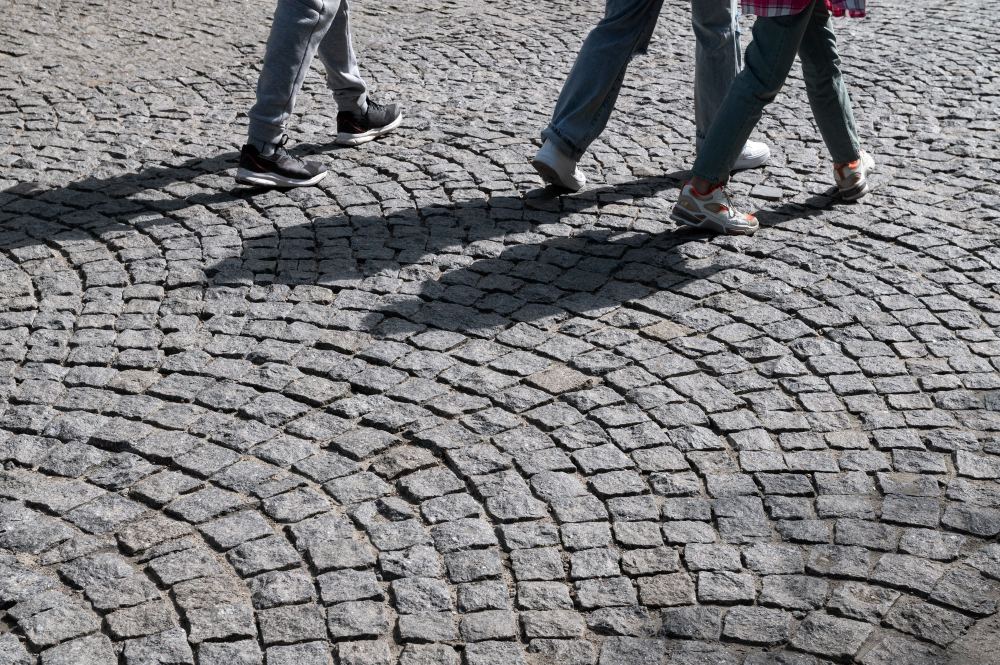Creating a beautiful and durable driveway with pavers can be a rewarding DIY project. Here’s a comprehensive guide to help you through the process:
- Planning: Measure your driveway area and choose the right type of pavers. Consider the load they will bear, the climate in your area, and the overall aesthetic you want to achieve.
- Materials: You’ll need pavers, bedding sand, crushed stone or gravel for the base, edge restraints, and polymeric sand for the joints.
- Preparation: Excavate the area to about 7-9 inches deep, ensuring a slight slope for drainage. Compact the soil with a plate compactor.
Step-by-step paver installation guide: making your dream driveway a reality
Choosing the right pavers is crucial for creating a driveway that’s both aesthetically pleasing and durable. Here’s how to make the best choice for your project:
- Assess Your Needs: Consider the weight the pavers will need to support, as this will determine their thickness and material. Driveways require stronger pavers than patios or walkways.
- Climate Considerations: If you live in an area with extreme weather conditions, opt for pavers that can withstand freeze-thaw cycles without cracking.
- Design Preferences: Pavers come in various shapes, colors, and textures. Select a style that complements your home’s exterior and fits your personal taste.
- Material Options: Common materials include concrete, brick, and natural stone. Each has its own look, lifespan, and price point.
- Maintenance Level: Some pavers require more maintenance than others. Consider how much time you’re willing to invest in upkeep when making your choice.
- Cost: Set a budget before you start shopping. Remember that the cost of pavers includes not just the materials but also the base materials and installation.
- Quality: Don’t compromise on quality. Higher-quality pavers might be more expensive upfront but can save you money in the long run due to their longevity.
- Environmental Impact: If sustainability is important to you, look for pavers made from recycled materials or those that allow water to permeate and reduce runoff.
By carefully considering these factors, you’ll be able to choose the right pavers for your dream driveway.
Paver Installation Guide:
Welcome to our comprehensive guide on paver installation. Whether you’re looking to create a pathway, patio, or driveway, laying pavers can transform any outdoor space. In this guide, we’ll walk you through the process step-by-step, ensuring that you have all the information you need for a successful installation.
Step 1: Planning Your Project
Before you begin, it’s essential to plan your project thoroughly. Measure the area where you want to install the pavers and decide on the pattern or design. Consider any cuts that will need to be made and account for a 5% overage in materials to ensure you have enough pavers.
Step 2: Gathering Materials
You will need pavers, bedding sand, base material (such as crushed stone), edge restraints, a compactor, and a saw with a diamond blade (for cutting pavers). Make sure to have all your materials ready before starting.
Step 3: Preparing the Base
The base is critical for a long-lasting paver installation. Excavate the area to a depth of about 7-10 inches below the desired final surface level. Compact the subsoil with a plate compactor and add a layer of geotextile fabric if needed to prevent weed growth.
Step 4: Laying the Base Material
Add the base material in layers, compacting each layer before adding the next. The total thickness of the base material should be around 4-6 inches.
Step 5: Screeding Sand
Once your base is ready, add a layer of bedding sand and screed it to an even thickness of about 1 inch. This layer helps to set and lock the pavers into place.
Step 6: Laying Pavers
Start laying your pavers from one corner or edge and work your way across. Use string lines to keep straight edges and maintain your pattern. Leave a small gap between pavers for sand filling later.
Step 7: Cutting Pavers
If your design requires it, cut pavers using a saw with a diamond blade. Always wear protective eyewear and follow safety precautions when cutting.
Step 8: Edging
Install edge restraints around the perimeter of your paved area to prevent shifting or spreading of pavers.
Step 9: Filling Joints
Spread fine sand over the surface and sweep it into the gaps between pavers. Compact the area again to settle the sand into joints.
Step 10: Sealing
For added protection against stains and weathering, consider applying a sealer to your paver surface once everything is settled.
With proper preparation and attention to detail, your new paved area will be both functional and aesthetically pleasing for years to come.



